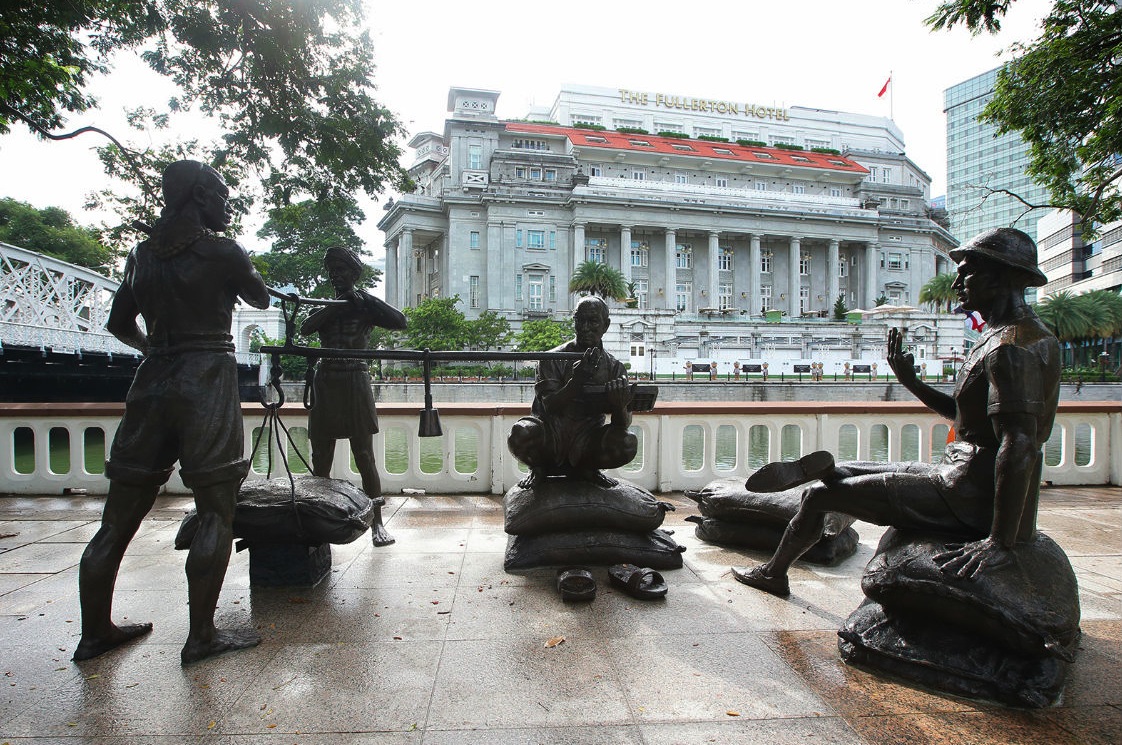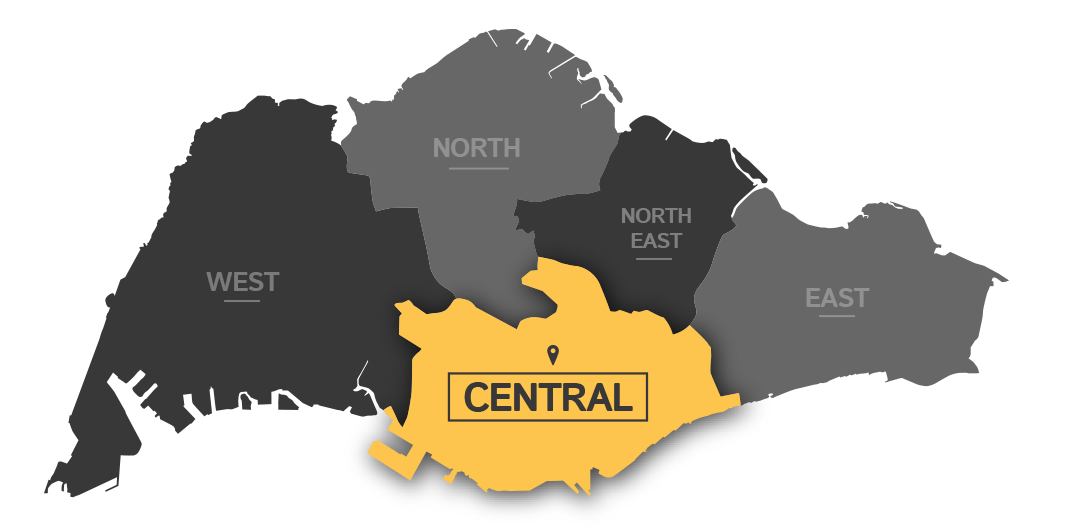
Sir Stamford Raffles wrote in 1819, 'Our object is not territory but trade; a great commercial emporium.' At the heart of the settlement's trade was the Singapore River. Lighter craft crowded the banks of the River along Boat Quay, and merchants had offices and godowns either here or at Commercial Square (Raffles Place). Early trade was in silk, cotton, spices and other exotic commodities. In the late 19th century, this shifted to rubber, tin and copra.
European traders, like those here, profited from Singapore's trade but it was the Chinese traders, like the towkay holding an abacus, who generated the most wealth. Providing much needed labour to the trading industry were Chinese and Indian coolies. Chinese coolies came from the southeastern provinces of china, while Indian coolies hailed from South India. The Chinese coolie and towkay in the sculpture are identified by their queue, or pigtail, which the Qing authorities required all Chinese then to wear. When the Qing dynasty ended in 1912, queues were done away with. The Indian coolie wears the customary turban.
Life as a coolie was difficult. Coolies lived in cramped and squalid conditions, often with no proper ventilation or sanitation. Many a coolie ended his days in Singapore, alone and penniless, plying the trading boats that crowded the Singapore River.
This sculpture is one of four pieces that are part of the People Of The River sculpture series depicting various historical scenes of people who lived and worked along the river. It commissioned in the early 2000s by the Singapore Tourism Board. The other three pieces - The River Merchants, From Chettiars to Financiers and First Generation - are also located nearby.



